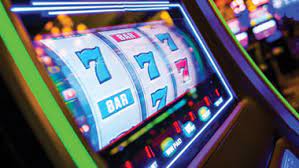Spotting Virtual Cues in Online Poker Mastering Digital Tells

In the rapidly evolving world of online poker, players face unique challenges when it comes to reading their opponents. Unlike traditional poker, where physical tells and body language play a crucial role, online players must adapt to a virtual environment where such cues are absent. This article explores the concept of digital tells in daftar idn poker and offers practical insights on how to spot virtual cues effectively.
Understanding Digital Tells
Digital tells refer to the patterns and behaviors exhibited by players in an online poker setting that can provide valuable insights into their hand strength or intentions. Since players cannot rely on physical gestures, they must focus on timing, betting patterns, and chat interactions to decipher their opponents’ strategies.
While some players may think they can hide their tells behind a screen, skilled players can identify subtle patterns that reveal a lot about their gameplay. Recognizing these tells can significantly enhance your decision-making at the virtual poker table.
Timing Tells
Timing is one of the most crucial elements to consider when trying to read opponents in online poker. The time a player takes to make a decision can often indicate the strength of their hand. Here are some key timing-related tells to keep in mind:
- Quick Decisions: If a player makes a rapid decision, particularly when betting or raising, it often indicates confidence in their hand. This quick response can signal that they have a strong hand and are eager to build the pot.
- Delayed Decisions: Conversely, a player who takes an unusually long time to act may be displaying hesitation or uncertainty. This behavior can suggest that they are not confident in their hand or are considering a bluff.
- Inconsistent Timing: Many players develop a consistent rhythm in their decision-making. If you notice a player deviating from their usual timing, it could be a strong indicator of a change in their hand strength. For instance, if a player who typically takes a few seconds to act suddenly takes much longer, it may indicate they are facing a tough decision.
Betting Patterns
In online poker, analyzing betting patterns is essential for deciphering your opponents’ strategies. Players often have established betting behaviors, and understanding these patterns can provide crucial insights. Here are some common betting patterns to observe:
- Aggressive Betting: Players who frequently raise or bet aggressively likely have strong hands. This behavior suggests confidence and an intention to extract maximum value from their opponents.
- Passive Play: Conversely, players who tend to check or call rather than bet may indicate weakness. If a player consistently opts for passive actions, it can suggest they are unsure about their hand strength.
- Sudden Changes: Be alert to any sudden shifts in a player’s betting pattern. For instance, if a normally conservative player suddenly starts making large bets, they may be holding a strong hand or attempting to bluff. On the other hand, if an aggressive player becomes passive, it could indicate uncertainty or a weak hand.
Chat Interactions
While the gameplay itself is critical, chat interactions in online poker can offer additional insights into your opponents’ mindsets. Here are some ways to utilize chat as a tool for reading players:
- Tone and Content: The way a player communicates in chat can reveal their emotional state. For example, if a player engages in light-hearted banter or trash talk, they may feel secure in their position. Conversely, a player who becomes defensive or silent may be feeling the pressure or uncertainty about their hand.
- Timing of Messages: Observe when players choose to chat. If they send messages during critical betting moments or while considering a decision, it may indicate a lack of focus or confidence.
- Consistency: Players who consistently engage in chat, regardless of their hand strength, may be using it as a strategy to distract or confuse opponents. However, if a player suddenly stops chatting during a hand, it could indicate that they are concentrating on a potentially strong play.
Reading HUD Stats
Many online poker players utilize Heads-Up Displays (HUDs) to track statistics on their opponents. These tools provide a wealth of information that can help players make informed decisions. Here are some key stats to consider when interpreting HUD data:
- VPIP (Voluntarily Put Money in Pot): This statistic reflects how often a player chooses to enter a pot. A high VPIP indicates a loose player who frequently plays hands, while a low VPIP suggests a more conservative player.
- PFR (Preflop Raise): This metric shows how often a player raises preflop. A high PFR indicates aggression, while a low PFR suggests a more passive style.
- Aggression Factor: This stat combines a player’s betting and raising actions compared to their calling actions. A high aggression factor indicates that a player is more likely to bet and raise, suggesting a stronger, more aggressive strategy.
Practice and Adaptation
Spotting digital tells in online poker is a skill that requires practice and adaptation. The more hands you play and analyze, the better you will become at recognizing patterns and behaviors. Here are some tips for honing your skills:
- Review Past Hands: After each session, take time to review the hands you played. Analyze your opponents’ actions and identify any digital tells you may have missed during the game.
- Participate in Forums: Engage with online poker communities and forums to discuss hands and strategies with other players. Sharing experiences and insights can help you develop a deeper understanding of virtual tells.
- Stay Flexible: Adapt your approach as you learn more about your opponents. Each player has a unique style, so being flexible in your analysis will allow you to adjust your strategies accordingly.



